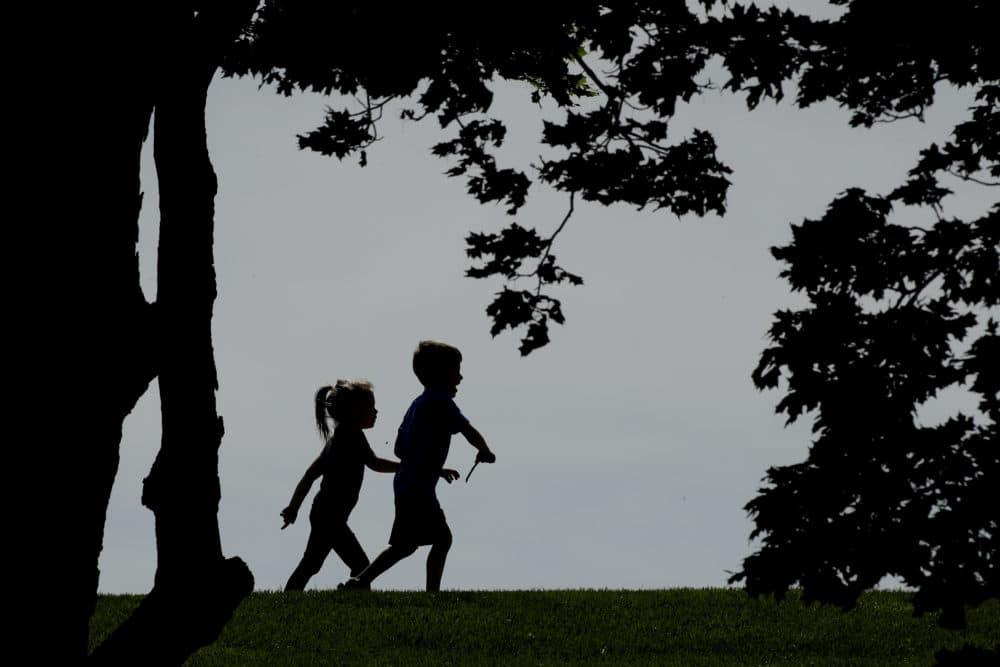Advertisement
Are Schools Prepared To Address Kids' Mental Health Needs After Reopening?
Resume
As states debate reopening schools, some child psychologists are expressing another worry — that schools won't be prepared to deal with kids' mental trauma when they do go back.
Fear, the loss of relatives, trauma and abuse are among the issues children might be dealing with since the coronavirus pandemic forced schools to close in March.
In their rush to get kids into classrooms, school officials are overlooking what could be a mental health crisis in their students, says Maryam Jernigan-Noesi, a psychology professor at Agnes Scott College in Decatur, Georgia.
Going back to school won’t immediately solve students’ mental health challenges brought on by the pandemic, she says. Many of them will face uncertainty about whether or not they will have to leave school again.
“They are coming back to school feeling very unstable,” she says. “This place that was once a place of stability, they've been detached from that, which has affected their own attachment to both their educators and the school environment.”
To help ease this transition, teachers, administrators and staff can look to the principles of trauma-informed schools, Jernigan-Noesi says. These schools train their staff to recognize and respond to students experiencing trauma and other stressors.
“Trauma can lead to experiences of disorganization, something we refer to as our executive functioning in our brains, which allows us to focus and to organize things that children need for learning,” she says. “It's about creating or facilitating a way for children to be able to calm themselves.”
Mindfulness exercises are used in trauma-informed schools to teach children to recognize what they are feeling in their bodies, which grows their emotional intelligence, Jernigan-Noesi says. This can be as simple as starting off the school day with a deep breathing exercise.
Parents can also practice mindfulness with their children at home. Jernigan-Noesi says she and her partner often do a breathing exercise with their 4-year-old son to get him to calm down before naptime.
“What he says is, 'Let's calm ourselves. Let's pretend that there's a birdie on your belly. If you can lie down on your blanket, on the floor and really breathe in and let that birdie rise. And then let the birdie come back down,’ ” she says.
Many educators have expressed concerns that remote learning has caused many students to fall behind. Jernigan-Noesi says she is concerned that without that mental stability, students will struggle to stay focused.
“I've been really concerned about commentary that says children have missed so much. We've got to get back to the business of learning,” she says. “The tools children need to learn may be disrupted at this time.”
Instead of rushing right back into learning, teachers and parents need to be patient in allowing kids to express themselves during this time, she says.
“In the moment, a child may want to start crying, but in addition to that, I think maybe offering arts and crafts, or especially for younger children, they tend to communicate through their play,” she says. “So you might read them books or encourage them to play and to really talk about how it is that they're feeling.”
While teachers shouldn’t expect every student to speak up, it’s important to offer a safe space for them to express their feelings — especially since they may be lacking that at home, Jernigan-Noesi says.
“I would not expect all of my students to be able to contribute,” she says, “but I certainly wouldn't want to deny them an opportunity to really speak about things that maybe they've noticed and haven't had anyone else to talk about.”
Karyn Miller-Medzon produced and edited this interview for broadcast with Todd Mundt. Samantha Raphelson adapted it for the web.
This segment aired on July 23, 2020.

